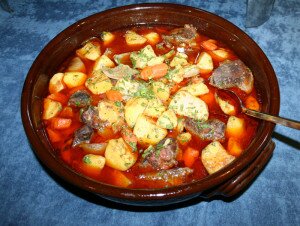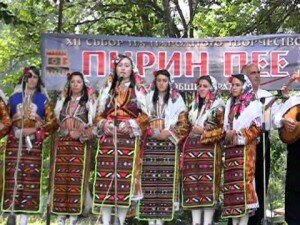From the first day of the year, greeted by Mumm dancers
, up to St Dimiter’s day in the late autumn, the whole town celebrates a long list or religious, ethnic, and modern holidays. The holiday is announced by solemn ringing of the bells, with a stalk of wild Geranium in hand. A visit to the church, and a big festive lunch or dinner, are always accompanied by plenty of wine, and celebratory sweetmeats at the festive table.
Old and young gather in their Sunday best or traditional folk costume, and a song and dance or a ritual then unites them all in a true community spirit.
For over three decades from 17th until 24th of May, Bansko celebrates its historical involvement in Bulgarian culture, culminating on Alphabet Day. Within the framework of the holidays, ethnographic and culinary exhibitions can be visited. Exhibitions of fine and applied arts, and thematic evenings, dedicated to the humour of Bansko are organized. Songs and customs are performed at the town square, and the public can visit exhibitions of traditional crafts, like wood carving , iconography, and silver and blacksmithing.
During the holidays in May, traditional Bansko celebrations, such as the ‘Among Three Mountains’ Festival takes place, Performances from over 300 dance and song singing groups , representing the authentic folklore of the region attract visitors.
In the vicinity of ‘Predela’ in August, ‘Pirin sings‘
Folk Festival draws in thousands of visitors and performers, singers, and dancers from Bulgaria as well as Romania, Moldova, Ukraine, and Greece .
Traditionally in August, Bansko hosts the Summer Jazz Festival, which prides itself with performances and impromptu jam sessions from the finest international jazz musicians , from as far afield as USA and Africa. People of all nationalities converge here in jazz week, celebrating music’s unique way of bringing people together.
The Day of Bansko (5th of October) and Christmas (20th – 25th December) are also notable for their impressive, festive fireworks displays, and stage events involving music, song and dance.
During the Bulgarian National Revival, Bansko became one of the most significant trade and craft centers in Southeast Macedonia. The industries of leather, timber, wood processing, and water milling flourished when multiple craftsmen’s workshops sprang up along the riverside of Glazne River . Traders frequented this new crafts centre for the opportunity to buy barrels, wine casks, cupboards, doors, chairs and tables, wood mortars and cups, even the famous whistles of Bansko. Local saddle maker goods were exported as war afield as Syria.




